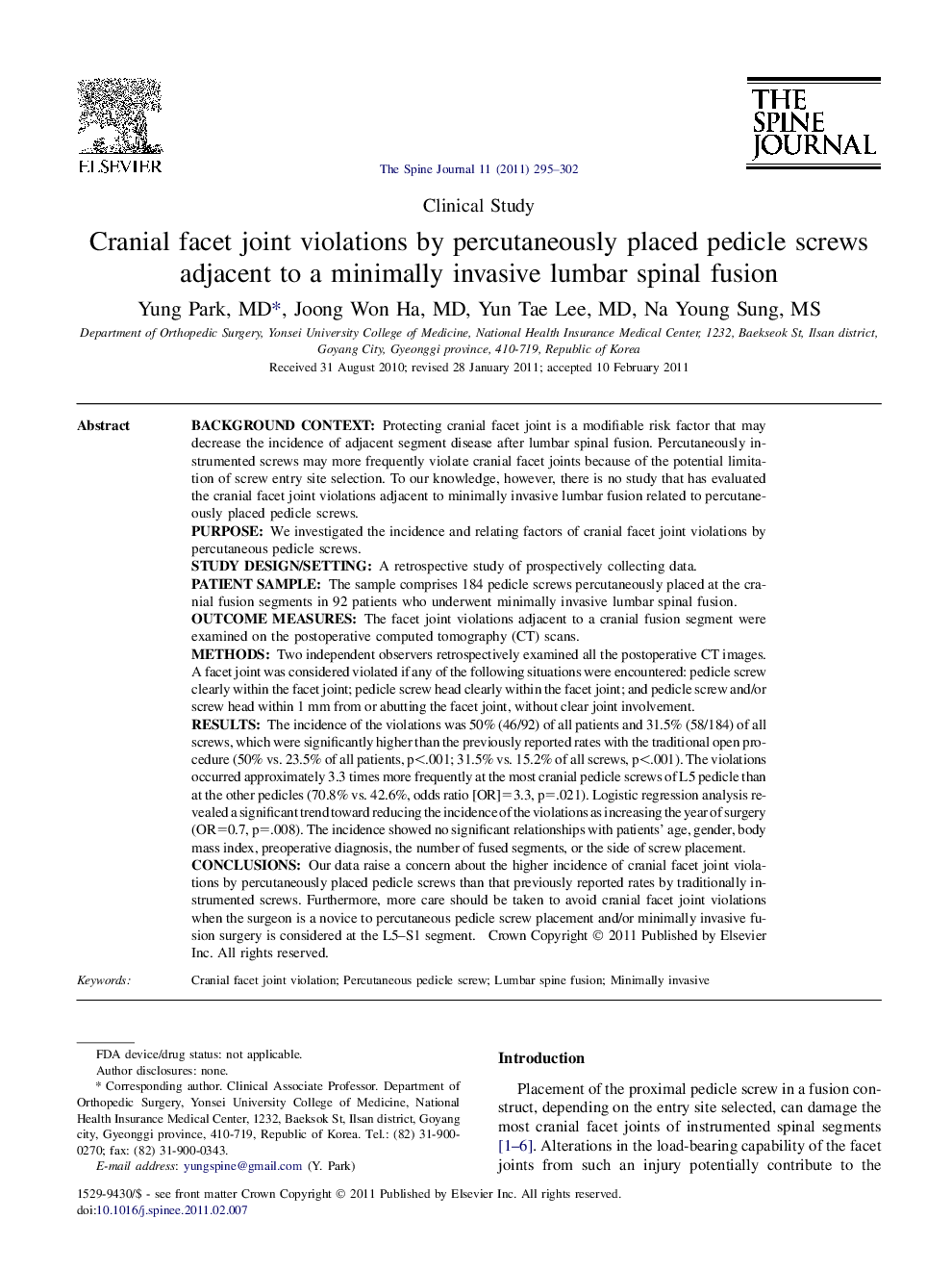| کد مقاله | کد نشریه | سال انتشار | مقاله انگلیسی | نسخه تمام متن |
|---|---|---|---|---|
| 6212818 | 1268601 | 2011 | 8 صفحه PDF | دانلود رایگان |

Background contextProtecting cranial facet joint is a modifiable risk factor that may decrease the incidence of adjacent segment disease after lumbar spinal fusion. Percutaneously instrumented screws may more frequently violate cranial facet joints because of the potential limitation of screw entry site selection. To our knowledge, however, there is no study that has evaluated the cranial facet joint violations adjacent to minimally invasive lumbar fusion related to percutaneously placed pedicle screws.PurposeWe investigated the incidence and relating factors of cranial facet joint violations by percutaneous pedicle screws.Study design/settingA retrospective study of prospectively collecting data.Patient sampleThe sample comprises 184 pedicle screws percutaneously placed at the cranial fusion segments in 92 patients who underwent minimally invasive lumbar spinal fusion.Outcome measuresThe facet joint violations adjacent to a cranial fusion segment were examined on the postoperative computed tomography (CT) scans.MethodsTwo independent observers retrospectively examined all the postoperative CT images. AÂ facet joint was considered violated if any of the following situations were encountered: pedicle screw clearly within the facet joint; pedicle screw head clearly within the facet joint; and pedicle screw and/or screw head within 1 mm from or abutting the facet joint, without clear joint involvement.ResultsThe incidence of the violations was 50% (46/92) of all patients and 31.5% (58/184) of all screws, which were significantly higher than the previously reported rates with the traditional open procedure (50% vs. 23.5% of all patients, p<.001; 31.5% vs. 15.2% of all screws, p<.001). The violations occurred approximately 3.3 times more frequently at the most cranial pedicle screws of L5 pedicle than at the other pedicles (70.8% vs. 42.6%, odds ratio [OR]=3.3, p=.021). Logistic regression analysis revealed a significant trend toward reducing the incidence of the violations as increasing the year of surgery (OR=0.7, p=.008). The incidence showed no significant relationships with patients' age, gender, body mass index, preoperative diagnosis, the number of fused segments, or the side of screw placement.ConclusionsOur data raise a concern about the higher incidence of cranial facet joint violations by percutaneously placed pedicle screws than that previously reported rates by traditionally instrumented screws. Furthermore, more care should be taken to avoid cranial facet joint violations when the surgeon is a novice to percutaneous pedicle screw placement and/or minimally invasive fusion surgery is considered at the L5-S1 segment.
Journal: The Spine Journal - Volume 11, Issue 4, April 2011, Pages 295-302